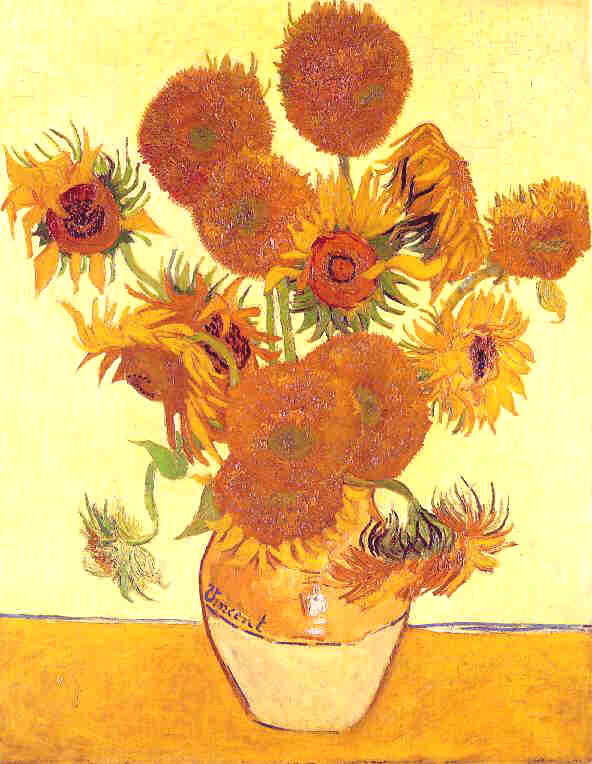 1901 Van
Gogh paintings shown. ^top^
1901 Van
Gogh paintings shown. ^top^
Paintings by the late Dutch painter Vincent van Gogh are shown at the Bernheim-Jeune gallery in Paris. The 71 paintings, which captured their subjects in bold brushstrokes and expressive colors, caused a sensation across the art world. Eleven years before, while living in Auvers-sur-Oise outside Paris, van Gogh had committed suicide without any notion that his work was destined to win acclaim beyond his wildest dreams. In his lifetime, he had sold only one painting. One of his paintings--the Yasuda Sunflowers--sold for just under $40 million at a Christie's auction in 1987.
Born in Zundert in the Netherlands on 30 March 1853, van Gogh worked as a salesman in an art gallery, a language teacher, a bookseller, and an evangelist among Belgium miners before settling on his true vocation as an artist. What is known as the "productive decade" began in 1880, and for the first few years he confined himself almost entirely to drawings and watercolors while acquiring technical proficiency. He studied drawing at the Brussels Academy and in 1881 went to the Netherlands to work from nature. The most famous work from the Dutch period was the dark and earthy The Potato Eaters (1885), which showed the influence of Jean-François Millet, a French painter famous for his peasant subjects.
In 1886, van Gogh went to live with his brother, Théo, in Paris. There, van Gogh met the foremost French painters of the postimpressionist period, including Henri de Toulouse-Lautrec, Paul Gauguin, Camille Pissarro, and Georges Seurat. He was greatly influenced by the theories of these artists and under the advice of Pissarro he adopted the kind of colorful palette for which he is famous. His painting Portrait of Père Tanguy (1887) was the first successful work in his new postimpressionist style.
In 1888, van Gogh, mentally exhausted and feeling he was becoming a burden on Théo, left Paris and took a house at Arles in southeastern France. The next 12 months marked his first great period, and working with great speed and intensity he produced such masterful works as his sunflower series [14 Sunflowers in a Vase >] and The Night Café (1888). He hoped to form a community of like-minded artists at Arles and was joined by Gauguin for a tense two months that culminated when van Gogh threatened Gauguin with a razor blade and then cut a piece of his own ear off. It was his first bout with mental illness, diagnosed as dementia. Van Gogh spent two weeks at the Arles Hospital and in April 1889 checked himself into the asylum at Saint-Rémy-de-Provence. He stayed there for 12 months and continued to work between recurrent attacks. One of the great paintings from this period was the swirling, visionary Starry Night (1889).
In May 1890, he left the asylum and visited Théo in Paris before going to live with Paul-Ferdinand Gachet, a homeopathic doctor and friend of Pissarro, at Auvers-sur-Oise. He worked enthusiastically for several months, but his mental and emotional state soon deteriorated. On 27 July 1890, feeling that he was a burden on Théo and others, he shot himself. He died on 29 July 1890, in the arms of his brother. He had exhibited a few canvases at the Salon des Indépendants in Paris and in Brussels, and after his death both salons showed small commemorative exhibits of his work. Over the next decade, a handful of other van Gogh exhibits took place, but it was not until the Bernheim-Jeune show in 1901 that he was recognized as a truly important painter. In subsequent decades, his fame grew exponentially, and today his paintings are among the most recognized works of art in the world.
— LINKS